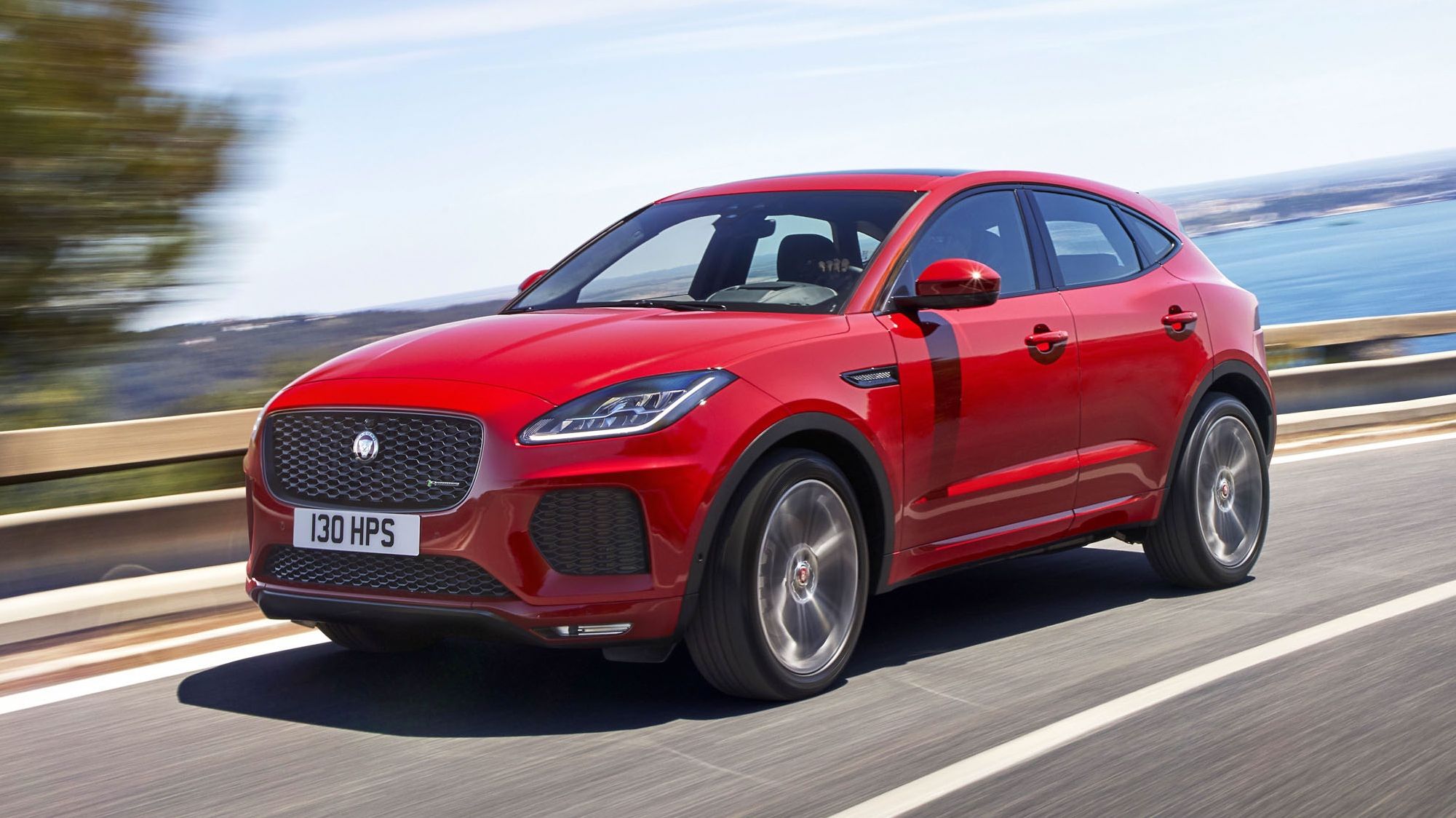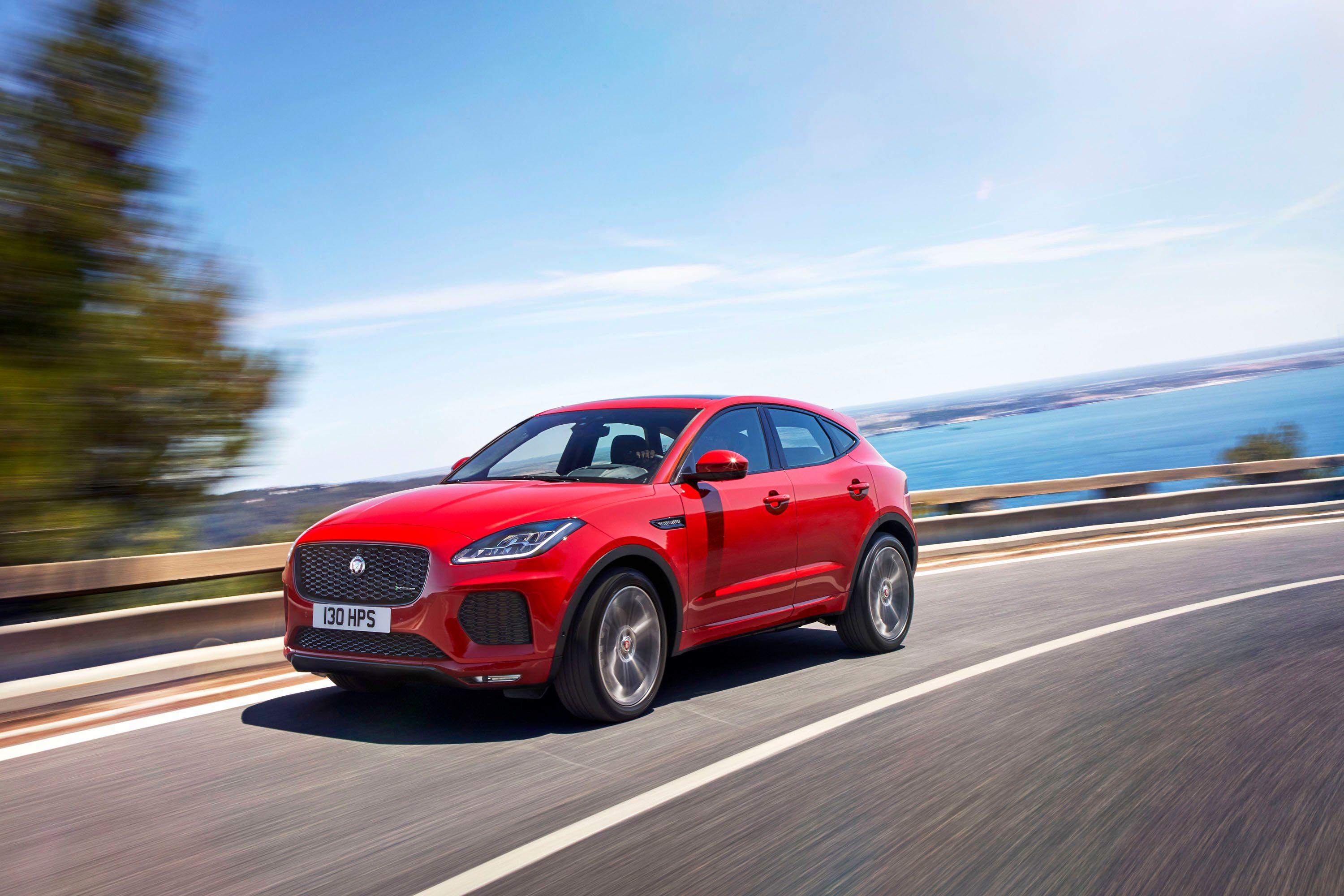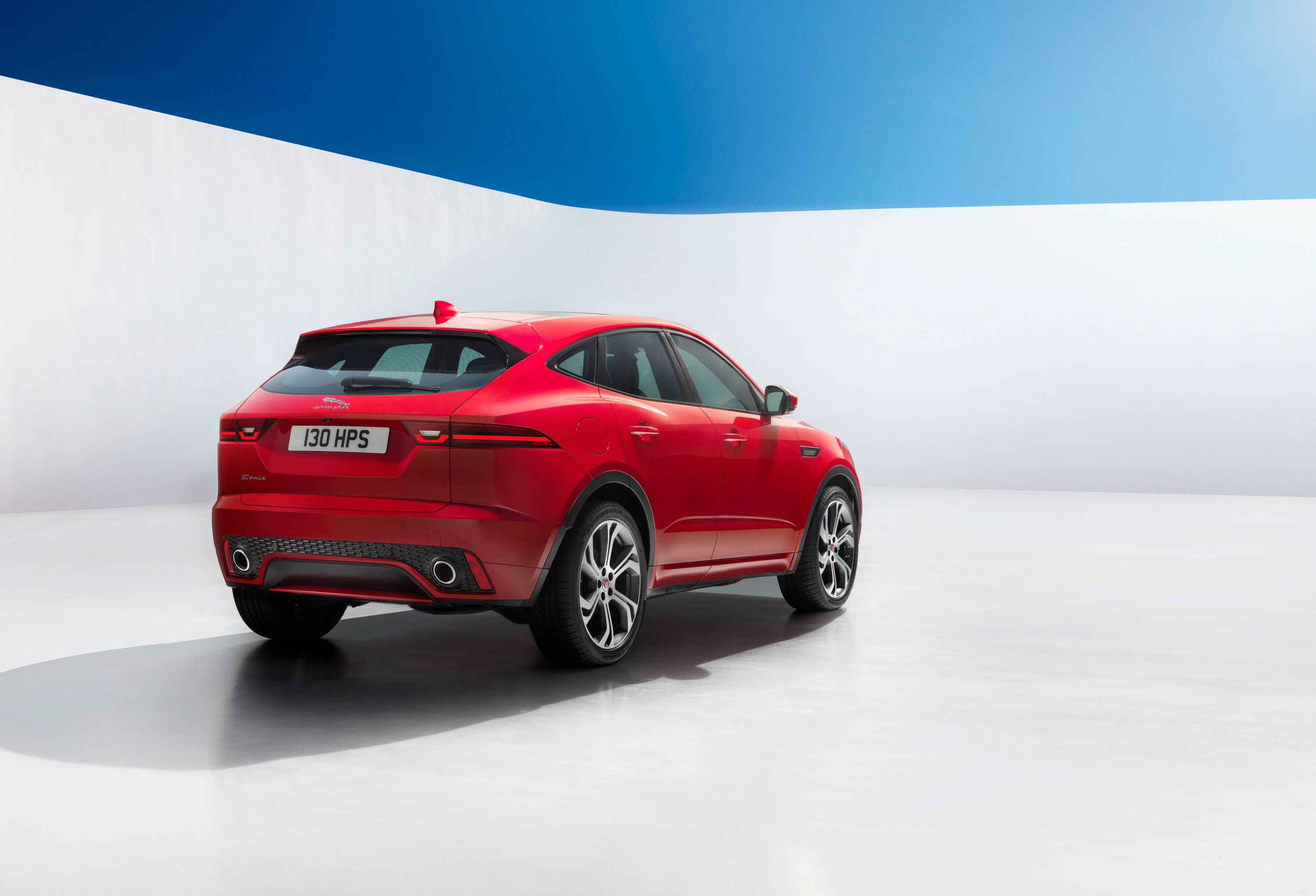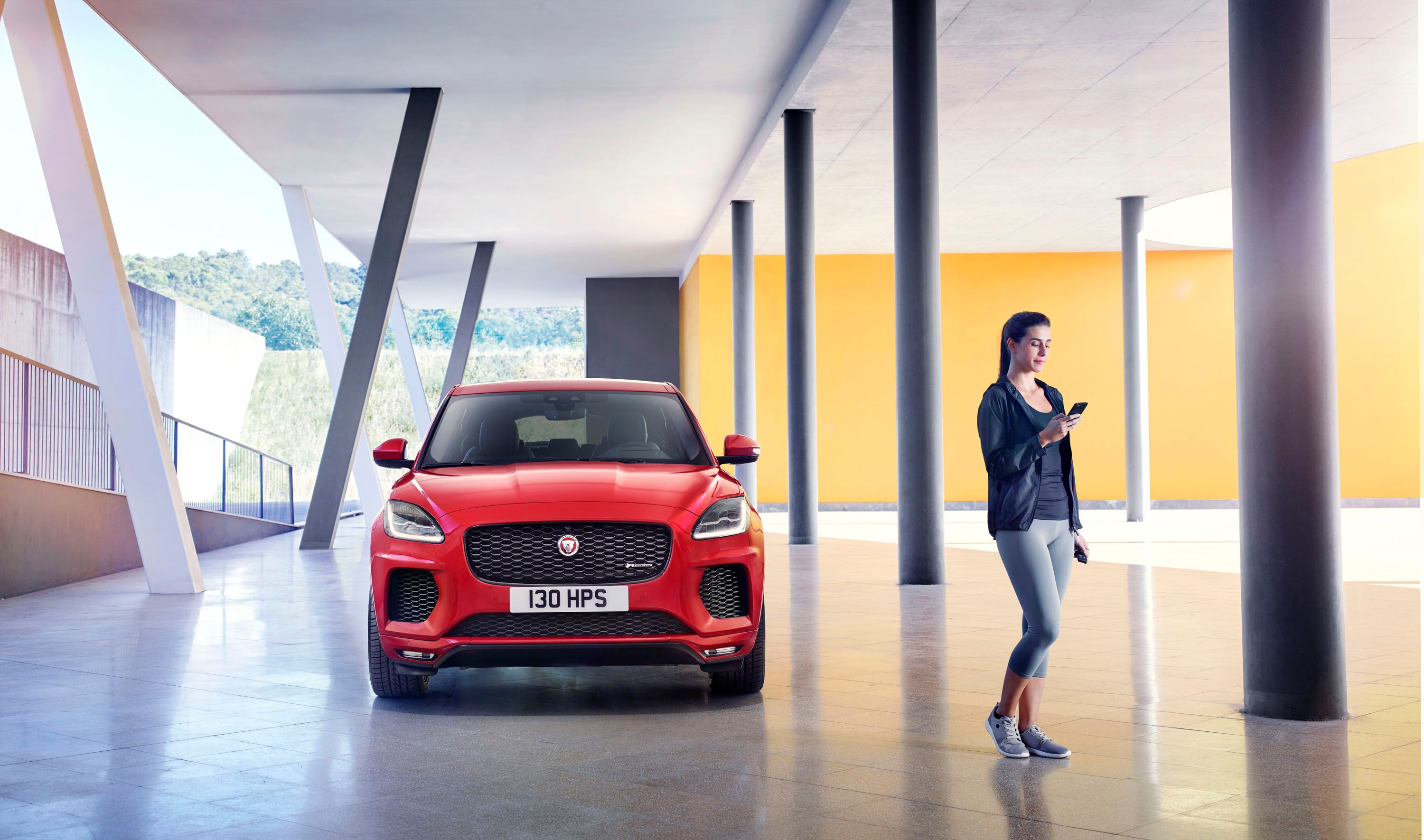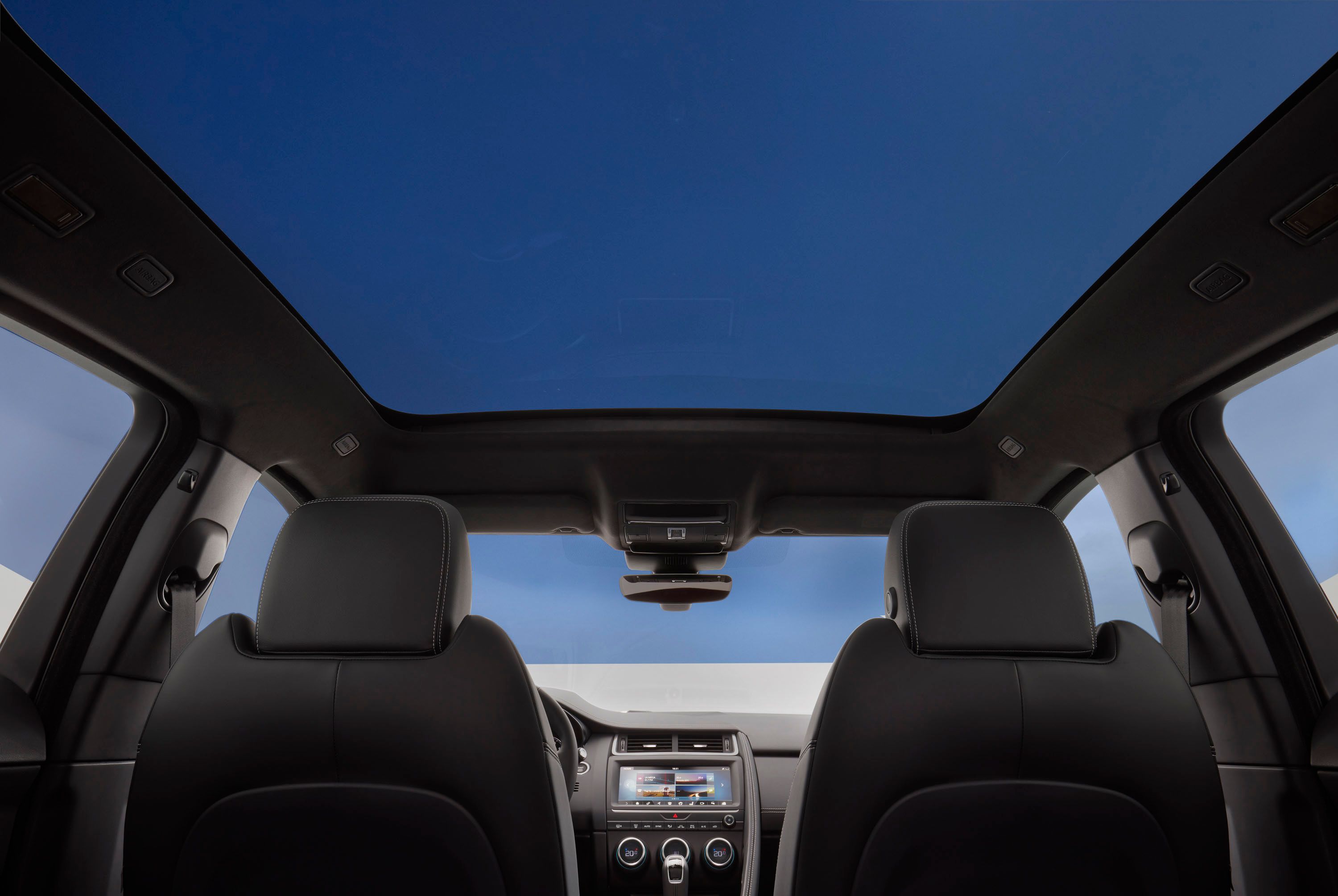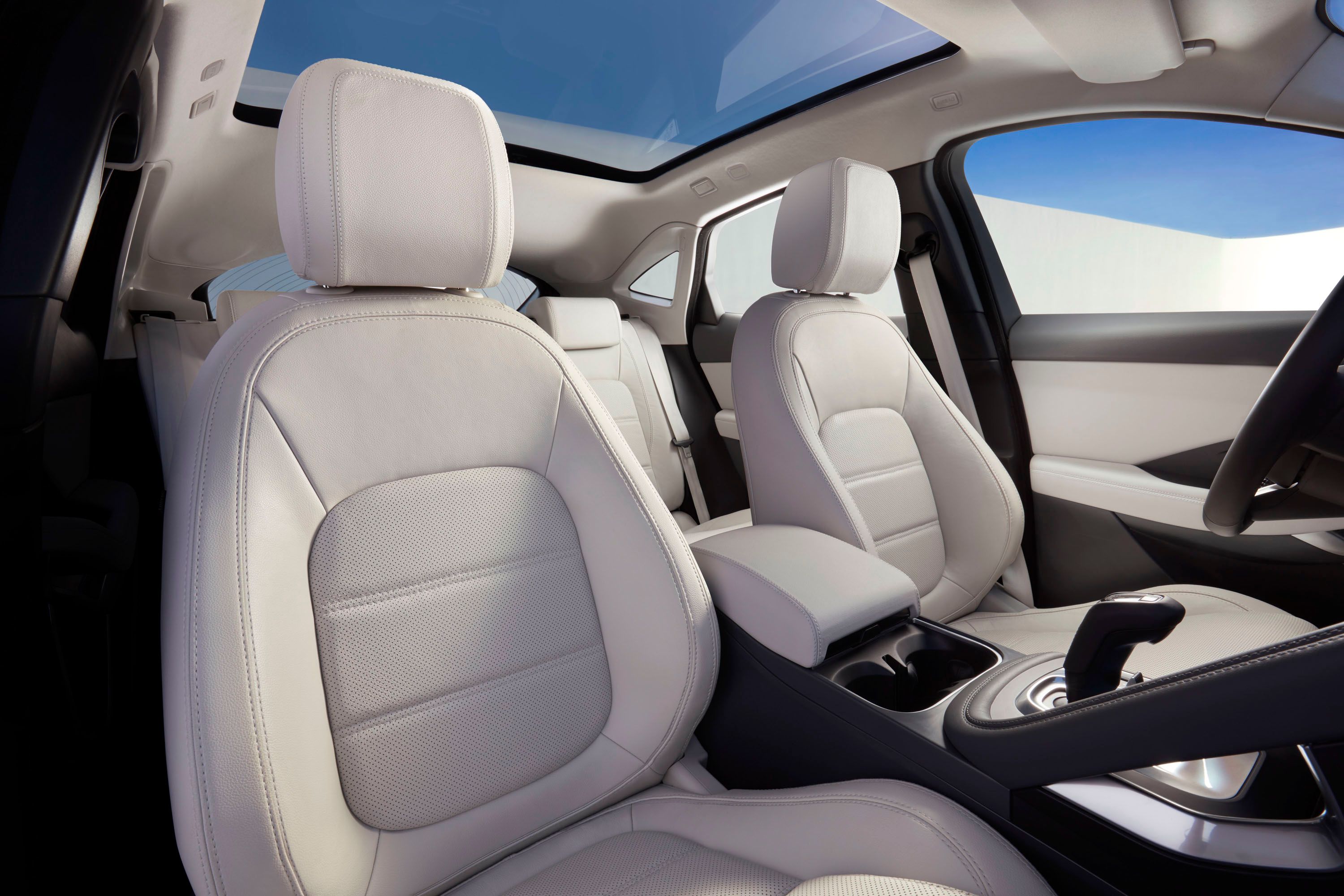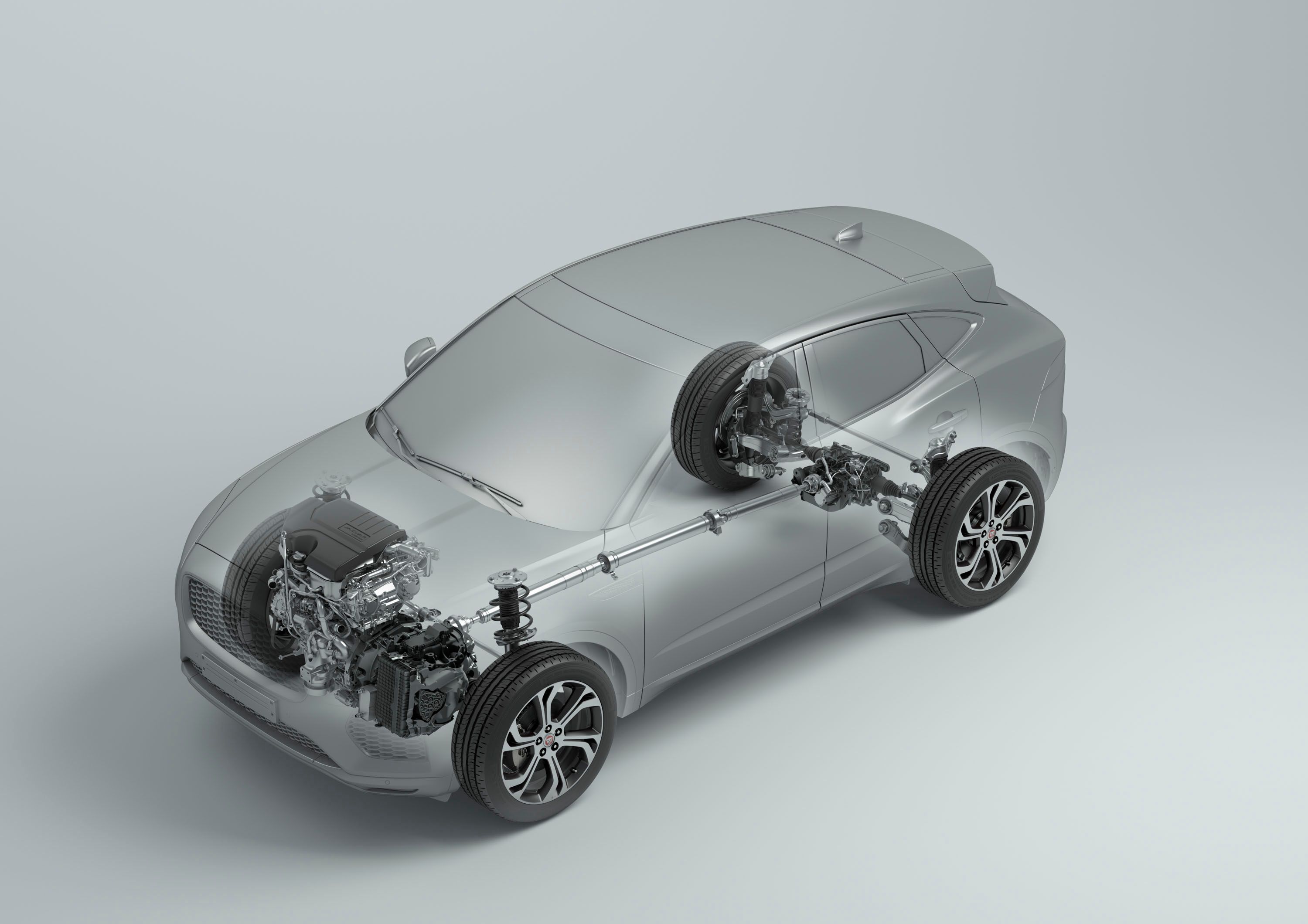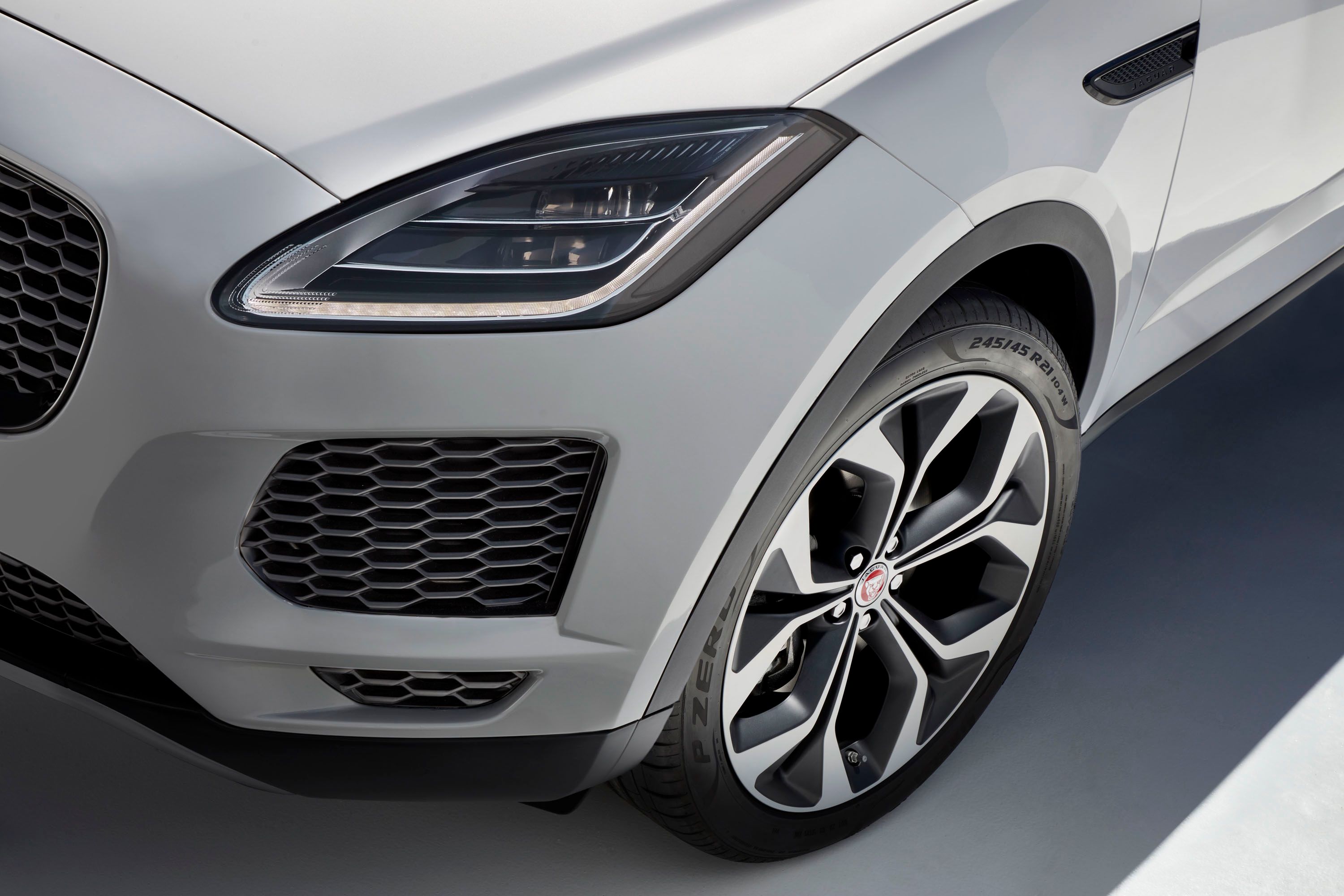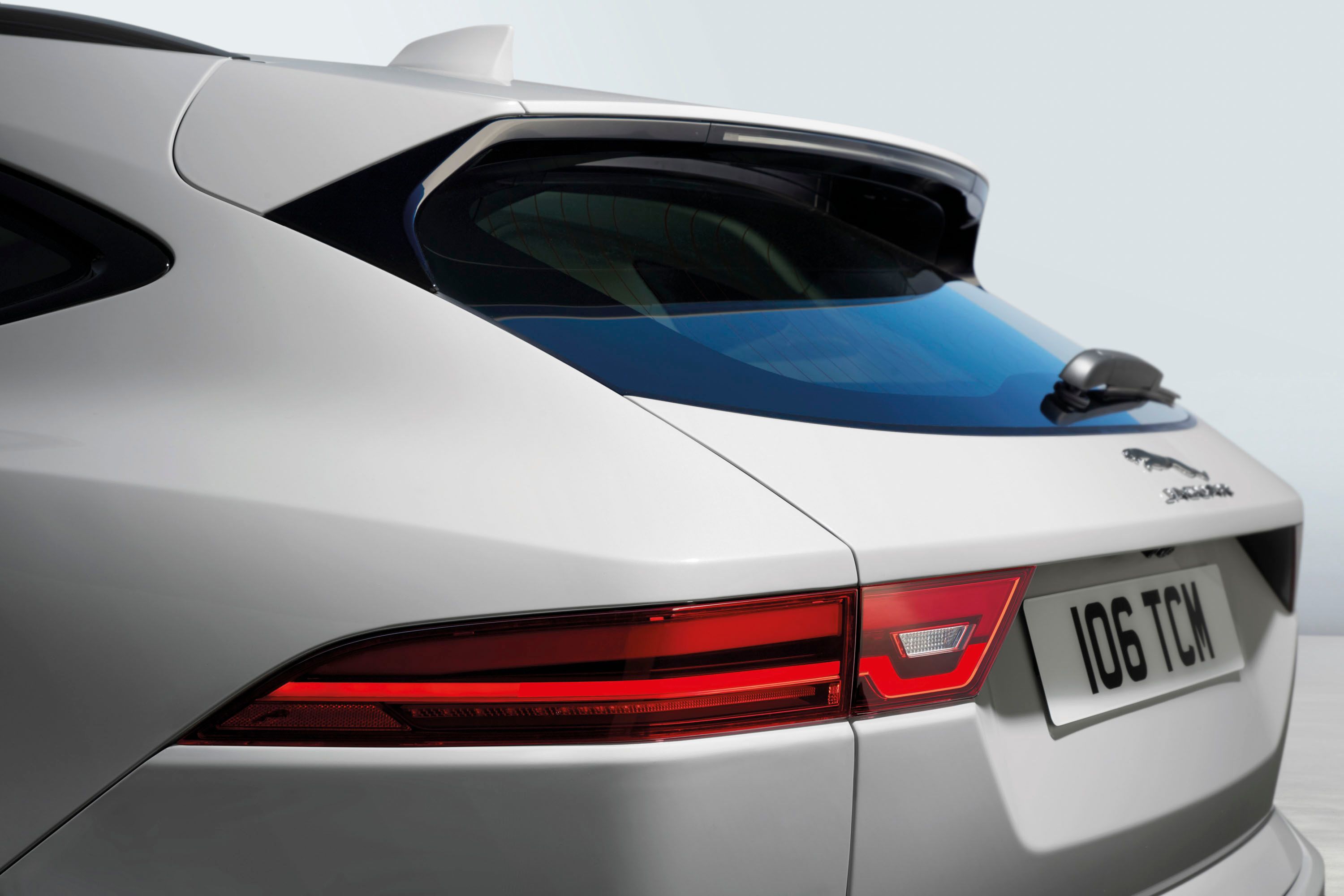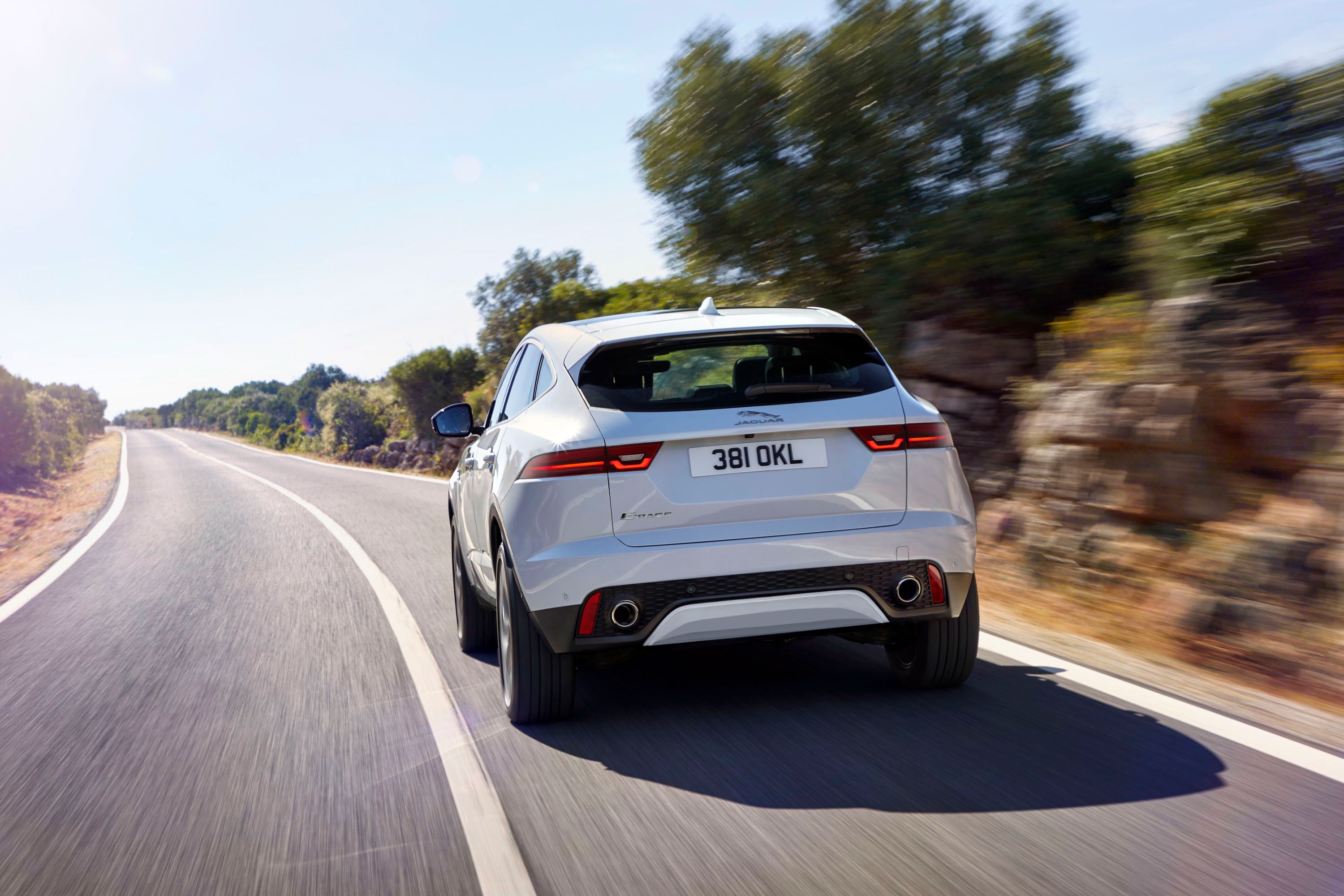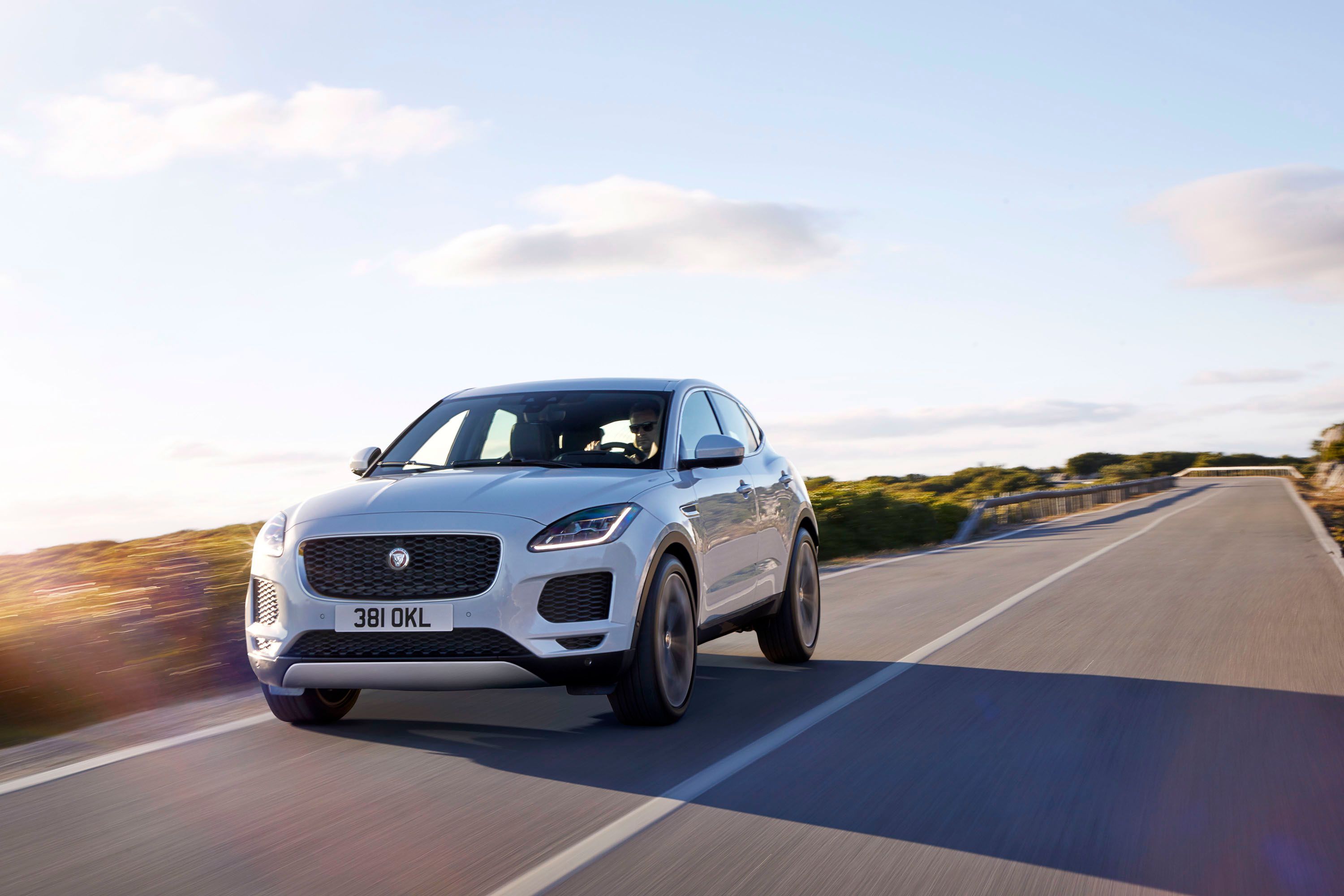The Jaguar F-Pace represents Jag’s first foray into the SUV market and it’s been an unbridled success. It’s received rave reviews, posted strong sales numbers, and was even named the 2017 World Car of the Year back in April. Needless to say, the follow-up model would have enormous shoes to fill. That model has now arrived, and from the looks of things, the all-new Jaguar E-Pace is going to do just fine slotting in below the F-Pace in Jag’s now-potent crossover and SUV lineup.
The entry-level premium crossover officially made its world debut in London and there’s already growing confidence among Jaguar execs that it has another hit on its hands with the new E-Pace. The crossover won’t have an easy time at it, though, because it’s entering a market that already features entrenched models like the Audi Q3, BMW X1, Mercedes GLA-Class, and Porsche Macan. Don’t expect Jag’s new crossover to shrink away from the competition, not when it has the F-Pace’s pedigree and some technical assistance from Jaguar’s sister company Land Rover, regarded as the godfather of today’s modern crossovers and SUVs. All things considered, the Jaguar E-Pace has all the tools to be as successful as its big brother. The more important question to ask is if it’s good enough for World Car of the Year consideration. It’s too early to say at this point, but the signs are there for the E-Pace to have a similar trajectory as the F-Pace. It just has to prove it’s worth all the hype.
Continue after the jump to read the full story.
It’s actually styled from the Jaguar F-Type, not the F-Pace
Off the bat, Jaguar has a unique tidbit about the E-Pace: it’s design is actually based on the F-Type sports car, and not the F-Pace crossover. The reasoning is something only Jaguar can explain, but it is pretty evident the moment you see the new crossover. The round headlights, for example, are starkly different from the angular headlights of the F-Pace. Look closely and you’ll notice that it’s shaped more like the the headlights found on the F-Type. You’ll also notice that the E-Pace’s window line is also more similar to the F-Type than the F-Pace, particularly how it angles up sharply as it approaches the C-pillar compared to the line on the F-Pace that largely remains flat. Move to the rear and the E-Pace adopts bulging rear haunches and different taillights compared to the ones found on both the F-Pace and F-Type. It’s a little hard to notice but notice the lack of the curved dip on the taillights of the E-Pace?
Overall, the E-Pace looks like its own model instead of being simply being a down-sized version of the F-Pace. Jaguar got it right adopting this design strategy for its entry-level crossover because it will allow the E-Pace to create an aesthetic identity of its own that’s independent from its big brother. And for what it’s worth, the crossover actually, at least in my mind, looks better than the reigning World Car of the Year.
How does it compare to its rivals?
Hard to say at this point, but I will give the E-Pace some credit for looking like a proper Jaguar without unnecessary frills. But it will face stiff competition from its rivals, particularly from the BMW X1, which itself received a cosmetic update recently that effectively removed its stigma as the ugly duckling of the entire BMW lineup. The X1 looks cool now, as does the Mercedes GLA-Class, which I think is still the best-looking crossover in the market today. I don’t expect Jaguar to be up-in-arms over customer preferences when it comes to the look of these models. What’s important is that the E-Pace is attractive on its merits. That should be enough for customers to give the newest Jag the attention it deserves.
How does it compare in terms of interior space?
According to Jaguar, the E-Pace has 577 liters of space when the seats are up and as much as 1,234 liters of space when the front passenger and rear seats are folded. That converts to about 20.4 and 43.7 cubic feet of space, respectively. Taking into account the competition, the E-Pace grades high in cargo volume when the seats are all up and right in the middle of the pack when the seats are stowed. The run-away winner in this particular test remains the BMW X3, which features a staggering 27 cubic feet of cargo volume when the seats are up and an incredible 59 cubic feet of cargo volume when the seats are folded. By comparison, the one-size bigger Lexus RX350 has 56 cubic feet of cargo space.
Check out the table below to compare the E-Pace’s cargo volume with other models.
|
Model |
Cargo volume (seats up) |
Cargo volume (seats down) |
|
Audi Q3 |
17 cubic feet |
43 cubic feet |
|
BMW X1 |
27 |
59 |
|
Jaguar E-Pace |
20.4 |
43.7 |
|
Mercedes GLA |
17.2 |
43.6 |
|
Porsche Macan |
17.7 |
53 |
How does its interior design stack up?
This is always a subjective test because different people look for different things when it comes to a car’s interior. Those who look for something simple and classy will like what Jaguar did with the E-Pace. A case can even be made that the crossover’s cabin looks too simple for its status, far different from the structured and well laid out interior of its F-Pace big brother.
The E-Pace also joins the Porsche Macan as the only crossovers among the five I’ve mentioned that doesn’t have a floating digital display unit. I’ve always been biased towards this configuration because I’m not a fan of the aesthetics of a display jutting out from the dashboard like a separate entity. Having it integrated into the center console looks cleaner and more streamlined. That’s a good plus for the E-Pace in my book, but it does suffer from the seeming lack of personality in the cabin. Compare it to the Macan’s cabin and you the latter looks more fun to be inside of. Even with the incredibly high amount of buttons available, Porsche found a way to streamline and arrange them neatly so there’s no wasted space in the center console. I suppose the E-Pace’s simpler interior styling will attract a good segment of buyers, especially for those who have little to no use for all those buttons, switches, and knobs that the Macan has.
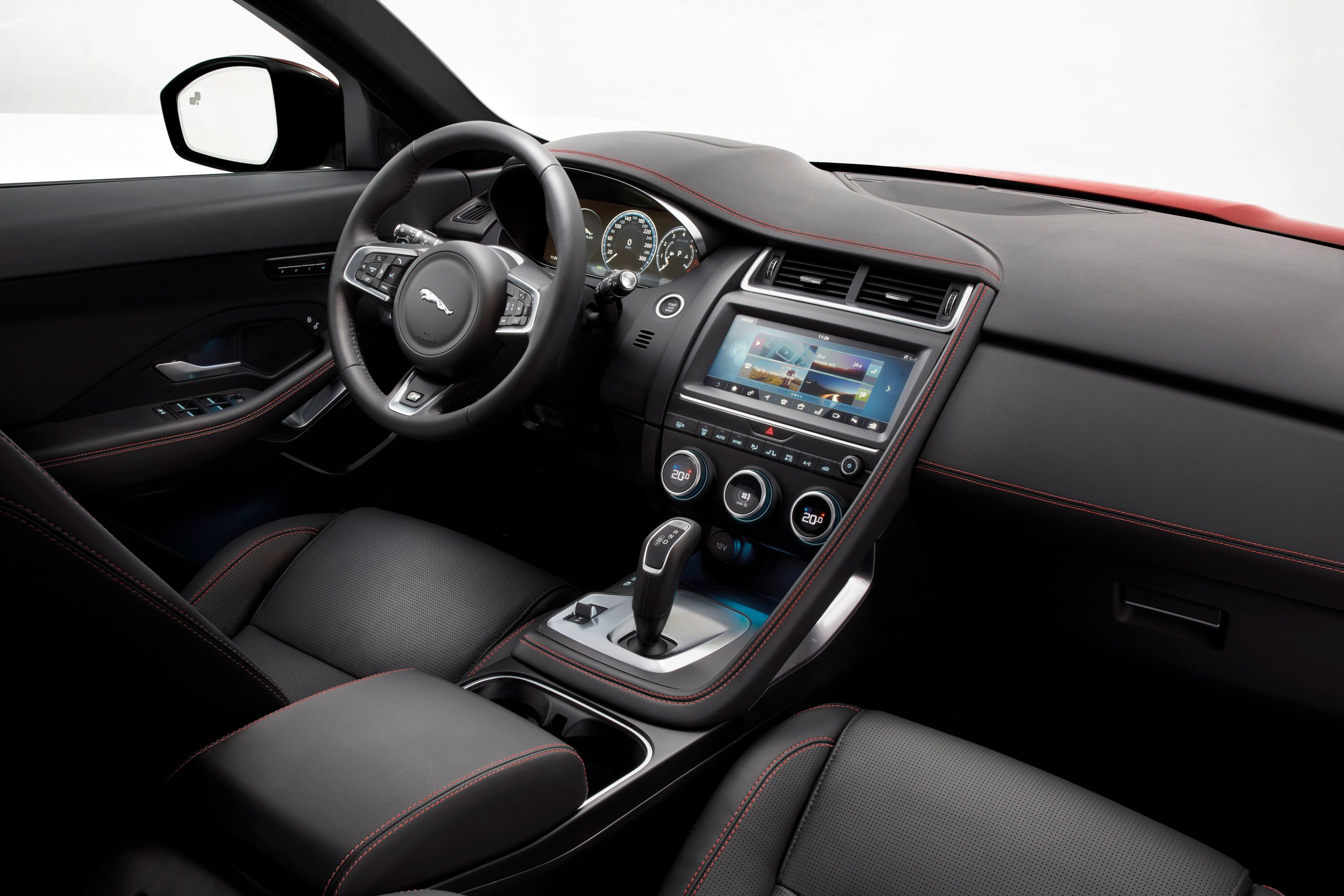
|
|
|
Jaguar E-Pace interior |
Plenty of engine options
The Jaguar E-Pace will feature a total of five different engines, including two gas variants and three diesels. All engines will be made available in Europe, but the U.S. market isn’t getting any of the diesels, leaving it with just the two gas versions. The three diesel engines will feature power outputs of 150, 180, and 240 horsepower while the two gas-powered variants will come with 246 and 296 horsepower.
Jaguar might as well plaster those output numbers on any promotional material it has for the E-Pace because they’re far higher than anything its rivals have to offer, especially when you consider that Jag managed to get those power figures from four-cylinder engines. They’re also the only two engines that will come to the U.S. so that’s another feather in the cap of Jag. In fact, the closest competitor that comes to the E-Pace’s output is the Macan and its 2.0-liter four-cylinder engine with 252 horsepower and 273 pound-feet of torque.
Both the X1 and GLA-Class suffer greatly here, partly because of a lack of variety. The X1, for example, is only offered in the U.S. with an output of 228 horsepower and 258 pound-feet of torque. The same thing can be said for the GLA-Class, which is only represented by the GLA250 and its output of 208 horsepower and 258 pound-feet of torque. The Audi Q3 doesn’t fare much better as its most powerful four-cylinder gas engine tops out at just 217 horsepower. Audi does have a five-cylinder offering in the 335-horsepower Q3 RS, but that belongs in an entirely different segment with the likes of the Macan Turbo, AMG GLA 43, and presumably, whatever hot variant Jaguar comes up with. Perhaps the E-Pace R or SVR?
|
Model |
Model |
Power |
Torque |
0 to 60 MPH |
|
Audi Q3 |
217 horsepower |
207 pound-feet |
8.2 seconds |
130 mph |
|
BMW X1 |
228 horsepower |
258 pound-feet |
6.3 seconds |
130 mph |
|
Jaguar E-Pace |
Top Speed |
Jaguar E-Pace |
296 horsepower |
n/a |
|
Mercedes-Benz GLA |
208 horsepower |
259 pound-feet |
6.4 seconds |
130 mph |
|
Porsche Macan |
252 horsepower |
273 pound-feet |
6.3 seconds |
142 mph |
No matter which way you slice it, the Jaguar E-Pace dominates the conversation in terms of engine power, and it’s not even close.
Does it come cheaper, though?
I suppose there’s a reason why the Jaguar E-Pace comes in favorably compared to some of its rivals. The catch to it is that customers will have to pay a little more to buy the E-Pace since the crossover starts at $38,600 in the U.S. That’s a level above what customers will have to pay compared to the BMW X1, the Mercedes GLA, and Audi Q3. On other hand, the E-Pace does represent significant value compared to the Macan, although that’s likely due to the baby Porsche SUV carrying that Stuttgart badge. There is a price on status, after all.
|
Model |
Model |
|
Audi Q3 |
$32,900 |
|
BMW X1 |
$34,745 |
|
Jaguar E-Pace |
Starting Price |
|
Mercedes GLA |
$32,225 |
|
Porsche Macan |
$47,800 |
Can the Jaguar E-Pace live up to the standards of the F-Pace?
It certainly looks like the E-Pace will, and that’s to the credit of Jaguar. Not long ago, the thought of seeing a Jag SUV was preposterous at worst and a gimmick at best. Now, the F-Pace has become one of the most popular premium SUVs in the market and from the looks of things, the E-Pace has a chance to have a similar rise to the top. All the pieces are definitely in place for the new Jag crossover to make its move and claw its away atop its own segment. As long as it rides and handles the way Jag intends it to, the rest of the field better step up their games because the E-Pace isn’t messing around.
References
Read our full review on the 2018 Jaguar E-Pace.
Read our full review on the 2018 Jaguar F-Pace.

